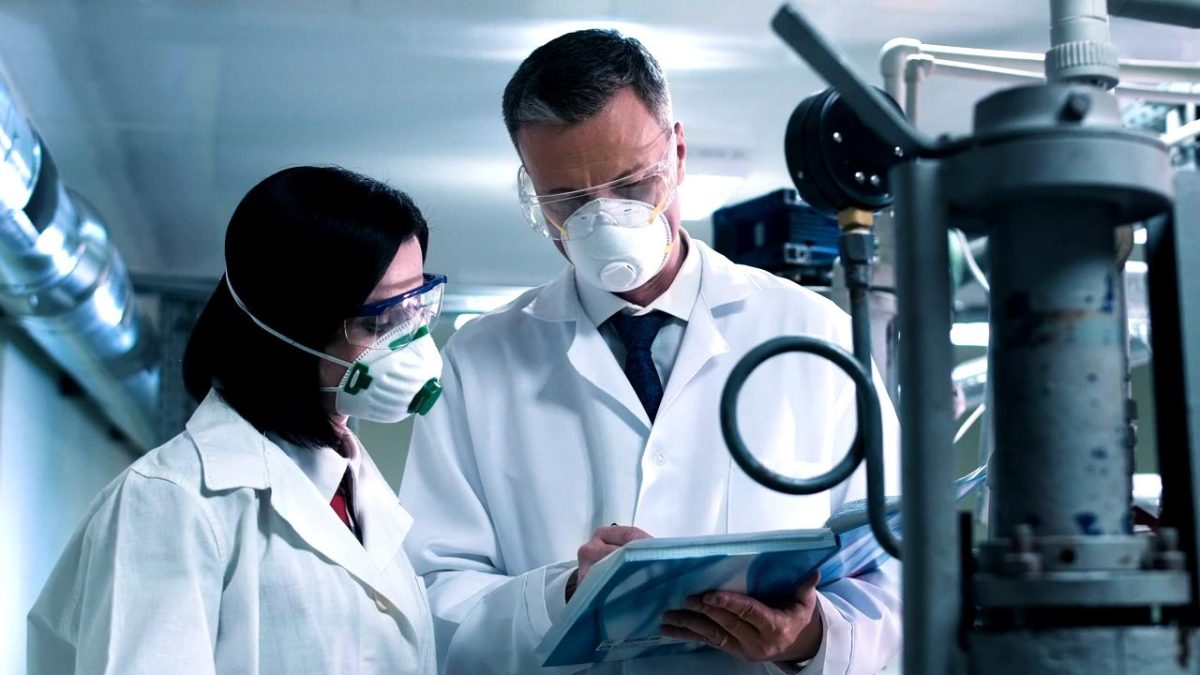Sulfuric Acid Safety Guidelines: A Comprehensive Approach

Anhydrous Ammonia Handling: Best Practices for Agricultural and Industrial Use
March 13, 2024
Handling Cyanide Safely: Protocols for Mining and Metal Processing Industries
March 19, 2024Sulfuric acid, a vital component in various industrial processes, demands careful handling to ensure the safety of workers and the surrounding environment. This article provides a comprehensive guide on sulfuric acid safety, covering storage, handling, and emergency response procedures.
Introduction
Sulfuric acid, known for its corrosive nature and versatile applications, requires meticulous attention to safety protocols. Whether you are working with sulfuric acid in a laboratory or an industrial setting, understanding and implementing safety guidelines are paramount to prevent accidents and protect lives.
Properties of Sulfuric Acid
Chemical Composition: Sulfuric acid, with the chemical formula H₂SO₄, is a highly corrosive and dense liquid. Its ability to react violently with water and various substances underscores the need for caution during storage and handling.
Corrosive Nature: One of the key characteristics of sulfuric acid is its corrosiveness. It can cause severe burns upon contact with skin, making the usage of personal protective equipment (PPE) imperative.
Potential Hazards: Understanding the potential hazards associated with sulfuric acid is crucial. These hazards include chemical burns, toxic fumes, and the risk of explosion when in contact with certain materials.
Storage Precautions
Suitable Containers: Choosing the right containers for storing sulfuric acid is fundamental. Materials like high-density polyethylene (HDPE) or glass-lined steel tanks are commonly recommended. Regular inspections of containers ensure their integrity.
Ventilation Requirements: Proper ventilation is necessary to prevent the accumulation of fumes. Storage areas should be well-ventilated, and consideration should be given to installing ventilation systems where applicable.
Segregation from Incompatible Substances: Sulfuric acid should be stored separately from incompatible substances, such as strong bases or reactive metals. Segregation helps prevent accidental reactions that could lead to hazardous situations.
Handling Procedures
Personal Protective Equipment (PPE): Anyone handling sulfuric acid must wear appropriate PPE, including acid-resistant gloves, goggles, and protective clothing. Ensuring that PPE is in good condition is vital for personal safety.
Safe Handling Techniques: Avoiding splashes and spills is crucial. Pouring slowly and steadily, using equipment designed for acid handling, and having an emergency spill kit nearby are essential precautions.
Spill Response Measures: In the event of a spill, quick and effective response is necessary. Neutralizing agents, spill containment measures, and proper disposal protocols should be readily available and well-understood by personnel.
Emergency Response Plan
Importance of Having a Plan: Every facility working with sulfuric acid should have a well-documented emergency response plan. This plan should include procedures for evacuations, first aid, and communication with emergency services.
First Aid Measures: Knowing how to administer first aid for sulfuric acid exposure is crucial. Immediate rinsing with water for at least 15 minutes is the primary response for skin contact, while eye wash stations should be accessible for eye exposure.
Contacting Emergency Services: In case of a significant incident, contacting emergency services promptly is essential. The emergency response plan should include clear guidelines on when and how to involve external help.
Regulatory Compliance
Overview of Relevant Regulations: Familiarity with local and international regulations governing the handling and storage of sulfuric acid is mandatory. Compliance ensures not only the safety of personnel but also protects against legal consequences.
Compliance Requirements for Businesses: Businesses handling sulfuric acid must adhere to specific compliance requirements, including proper documentation, employee training records, and regular audits to verify adherence to safety standards.
Risk Assessment
Conducting a Risk Assessment: Regular risk assessments help identify potential hazards and vulnerabilities in the sulfuric acid handling process. This proactive approach allows for the implementation of preventive measures.
Identifying Potential Risks and Mitigations: Identifying specific risks, such as equipment failure or human error, enables the development of targeted mitigations. Implementing safeguards and redundancy measures adds an extra layer of protection.
Training and Education
Importance of Employee Training: Ensuring that all personnel are adequately trained in sulfuric acid safety is non-negotiable. Training programs should cover proper handling, emergency response, and the use of safety equipment.
Periodic Safety Drills: Conducting periodic safety drills helps reinforce training and ensures that employees are familiar with emergency procedures. Regular drills contribute to a culture of preparedness.
Personal Responsibility
Emphasizing Individual Responsibility: Creating awareness about individual responsibility for safety fosters a culture of accountability. Employees should be encouraged to report unsafe conditions promptly.
Reporting Unsafe Conditions: Establishing a straightforward mechanism for reporting unsafe conditions or potential hazards empowers employees to contribute to a safer working environment.
Equipment Inspection and Maintenance
Regular Inspection Routines: Establishing routine inspections for equipment used in sulfuric acid handling is crucial. Regular checks ensure that equipment is in good working condition and reduces the risk of failures.
Importance of Well-Maintained Equipment: Well-maintained equipment is less likely to malfunction, minimizing the risk of accidents. Regular maintenance schedules should be followed diligently.
Transportation Safety
Guidelines for Transporting Sulfuric Acid: When transporting sulfuric acid, adherence to transportation guidelines is paramount. This includes using approved containers, securing them properly, and complying with transport regulations.
Securing Containers During Transit: Ensuring that containers are securely fastened during transit prevents spills and minimizes the risk of accidents. Proper loading and unloading procedures should be followed.
Case Studies
Real-Life Incidents and Their Outcomes: Studying past incidents involving sulfuric acid highlights the importance of strict adherence to safety protocols. Learning from these cases can prevent similar accidents in the future.
Lessons Learned from Past Accidents: Analyzing the root causes of past accidents helps identify areas for improvement. Implementing corrective actions based on lessons learned enhances overall safety.
Environmental Impact
Effects of Sulfuric Acid Spills on the Environment: Sulfuric acid spills can have severe environmental consequences, including soil and water contamination. Mitigating these impacts requires swift and effective response measures.
Mitigation Measures for Environmental Protection: Implementing containment and cleanup procedures minimizes the environmental impact of sulfuric acid spills. Proper disposal of contaminated materials is essential for environmental stewardship.
Best Practices in the Industry
Learning from Industry Leaders: Studying the practices of industry leaders in sulfuric acid safety provides valuable insights. Emulating best practices improves overall safety performance.
Implementing Best Practices for Safety: Identifying and implementing best practices tailored to specific operational contexts enhances safety outcomes. Continuous improvement is key to staying ahead of potential risks.
Continuous Improvement
Encouraging a Culture of Continuous Improvement: Promoting a culture of continuous improvement ensures that safety protocols evolve with changing circumstances. Encouraging feedback and innovation drives ongoing enhancements.
Regularly Updating Safety Protocols: Safety protocols should be reviewed and updated regularly to reflect new technologies, regulatory changes, and lessons learned from incidents. Flexibility and adaptability are essential traits.
Conclusion
Sulfuric acid, with its widespread industrial use, demands utmost respect for safety protocols at all stages of handling, storage, and emergency response. By implementing the guidelines outlined in this article and fostering a culture of safety, organizations can minimize risks and create safer working environments for their employees.




